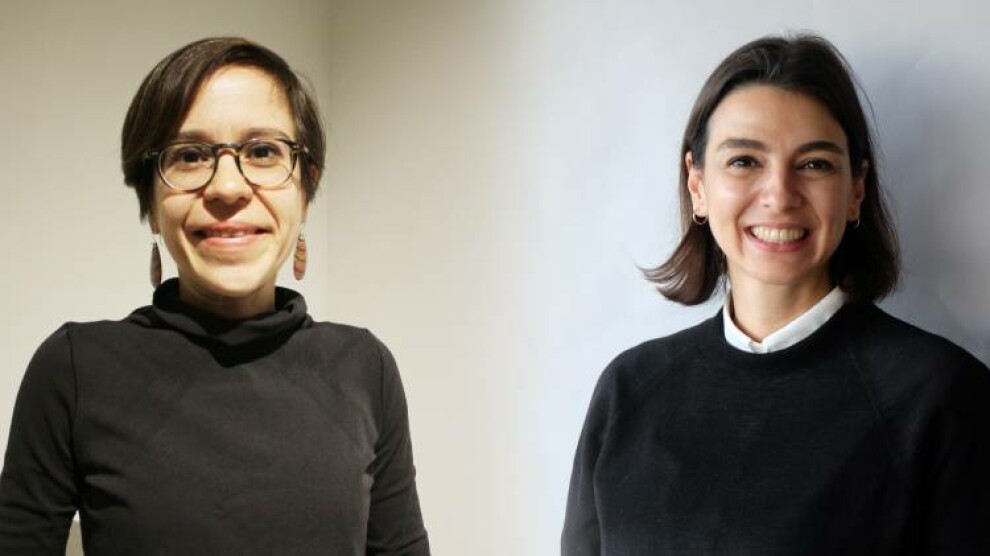Civil initiative for architecture: UrbanTank
Tüba Doğu and Melis Varkal are two successful women having architectural education and working on urban sociology. Instead of an architectural understanding stuck in an office, they have formed a civil initiative called "UrbanTank" with the idea of producing tools and conducting researches in order to include the citizens and to allow them to speak out. UrbanTank can be considered as an unusual model in Turkey and around the world. They conduct original researches on the ground along with participants for urban residents, users of public spaces.

Zeynep Pehlivan
İzmir- Tüba Doğu and Melis Varkal are two young women getting the chance to know each other during their architectural education at Middle East Technical University. They both work in the academic field and carry out projects in an office, but what really unites them are their works in the field of architecture and urban sociology. A special formation called “UrbanTank” rises from their works aiming for searching tools and methods of the participatory urban design in public spaces. They aim to come together with citizens, the user of the architectural structure instead of working on an architectural understanding stuck in an office. They also aim to include citizens in the decision-making mechanisms by using the tools in projects they have developed. Even though the idea to form the UrbanTank emerged in 2011, it was founded in 2015. Until that time, they had carried out many projects such as “Everything can happen under viaducts”, “My Neighbor”, “Memory Box” and “Loss”. Let's listen to the projects of the UrbanTank developed to analyze the relationship between urban sociology and architecture from Melis and Tüba.
They aim to include citizens in the decision-making and design period
We can say that UrbanTank is essentially a “kind of civil initiative that has adopted a collective working style.” Melis and Tüba started asking themselves, “What kind of actions and research can we carry out in public spaces?” while thinking about what they could do for an alternative architectural understanding. Tüba tells how they founded the UrbanTank as follows;
“Our aim was to prevent the architecture from being stuck in offices. As we asked ourselves ‘How can we bring together the architectural structure with its users?’ And we found ourselves talking with urbanites. ‘How could the urbanites be included in these processes, in the decision-making and design period?’ This was one of the questions we focused on the most. Actually, it was our main concern.”
Melis thinks that the profession of architecture is generally in the position in which people from the public and private sector and political actors are employers, but it also has a connection with the cities and urbanites. She tells how they founded the UrbanTank as follows;
“The profession of architecture is actually a profession being employed by the private sector and political actors. They come to see us and tell us what kind of place is needed. This profession is also a profession trying to establish ties with the city. I think we are among the architects who find the relationship between architecture and the city valuable. I am an architect involved in the profession, Tüba is an academic; what brought us together is our concern about establishing a connection with the urbanites. UrbanTank is a platform formed by us to create a space for us.”
They work with people having different disciplines
“UrbanTank collaborates on every research. We collaborate with people and organizations. We have collaborated with local administrations, universities, international NGOs, and art organizations so far. We work with most architects, designers, and people having different disciplines such as film designers, theater writers, planners, industrial designers. The project teams change every time and they stand by what they do and this always surprises us.
Our first project for UrbanTank was the ‘My Neighborhood’ project. While writing my master's thesis, I went to Güzelyalı Neighborhood; the neighborhood has a neighborhood association. The neighbors have a sense of belonging to their neighborhood. We asked them, “What would you say if you could use ‘my neighborhood’ in a sentence?” it was a project to understand their sense of belonging. We noticed that the sense of belonging dates back to old times. And this allowed us to develop another project called, “Memory Box”. We felt that we had to document very important stories in the memory of people living in the neighborhood. We worked in the neighborhood for six-seven months. We talked to many different people. We collected the stories and put them in a box. We placed that box in the center of the neighborhood…”
"The dynamics of each project are different"
“It is not easy to generalize about the city of İzmir. Actually, as the organizational structure changes, urban experiences also change. While there are changes from inside, there are also experiences from outside. For example, there is an ongoing migration Issue. We should be careful about the different dynamics. I can say the dynamics of each project are different,” says Tüba.
